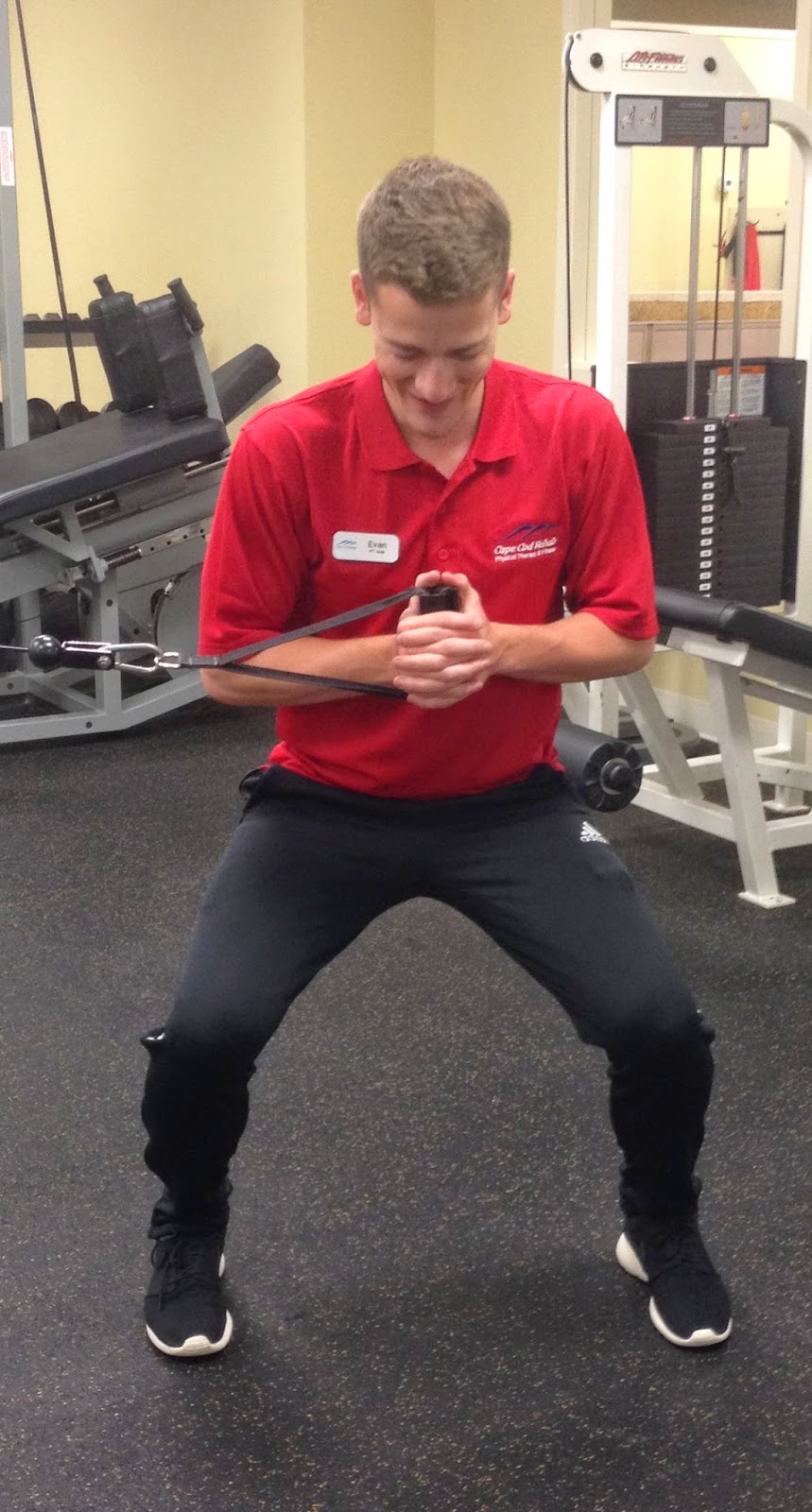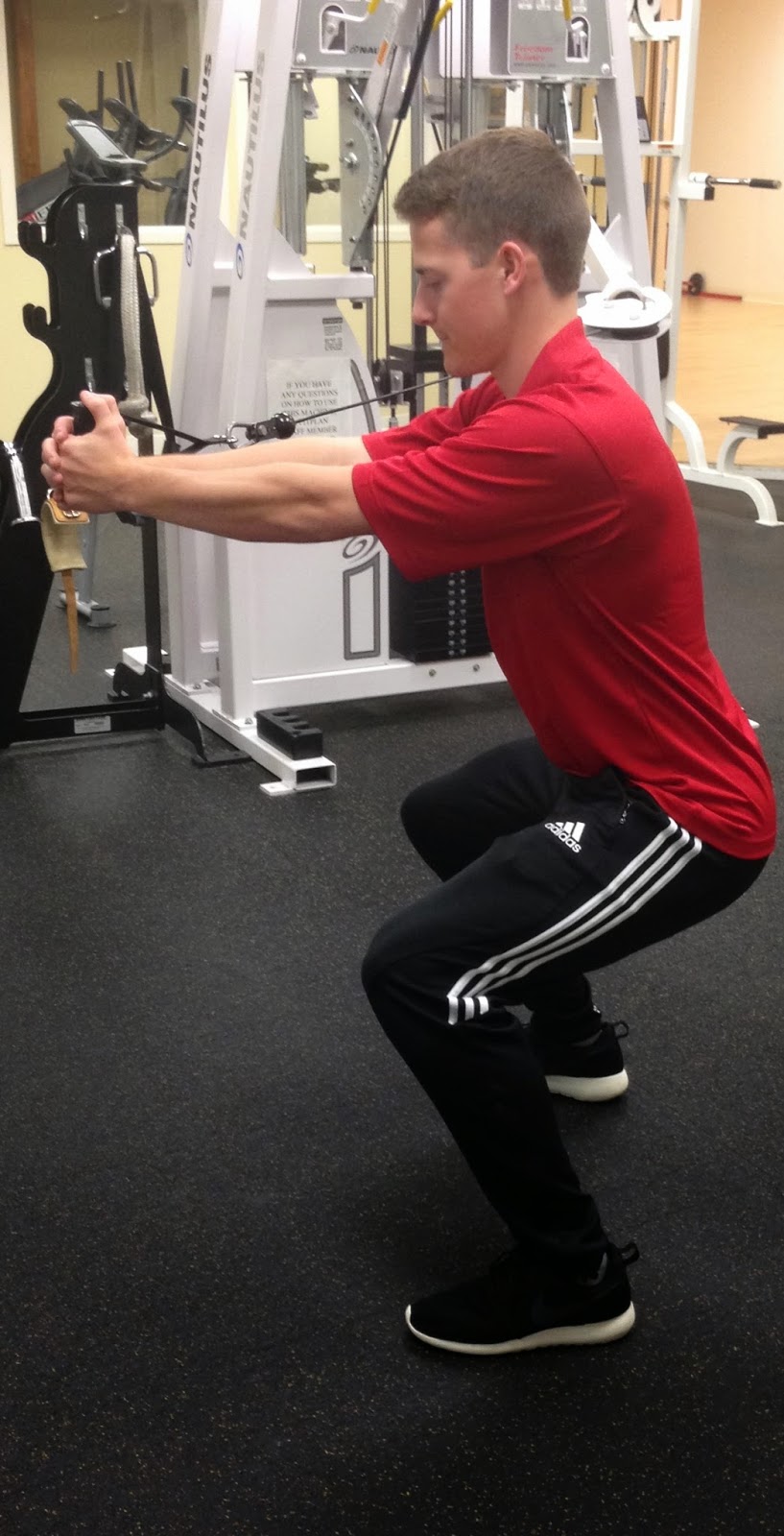The majority of individuals that
participate in exercise programs usually train their abdominal muscles.
Different people have different reasons as to why they like to train
abdominals. Some want that defined 6-pack, others may want to lose weight
around the torso, and athletes train the core to improve their game.
The core is a big part of every movement we make.
The core is a big part of every movement we make.
 Most individuals think that the core
refers to only abdominal muscles. In all actuality the core is a functional
unit composed of the abdominal and lower back muscles. These two groups are
connected by the transverse abdominals and internal obliques. The muscle groups
help keep the torso stable during all body motions. Failure to train these
muscles properly can change the way the body functions.
Most individuals think that the core
refers to only abdominal muscles. In all actuality the core is a functional
unit composed of the abdominal and lower back muscles. These two groups are
connected by the transverse abdominals and internal obliques. The muscle groups
help keep the torso stable during all body motions. Failure to train these
muscles properly can change the way the body functions.
There are two parts of the abdominals;
the inner unit and the outer unit. The inner unit deals more with keeping the
trunk stable, while the outer unit is involved in movement patterns. In my next blog post I will go more in depth about these two units. Abdominals are broken
down into three sections; upper, lower, and obliques. All three should be
trained equally so no imbalances occur within the body. This is where the
majority of individuals go wrong with their training. People are always in the
gym doing sit-up after sit-up. Sit-ups / crunches are great exercises, but too
much of them changes the body. Normal posture alignment is an imaginary line
that travels through the cheek bone, sternum, and pubic symphysics. When an
individual performs many sessions of sit-up / crunch exercises they actually
begin to create a forward head posture. Over a long period of time this type of
training will pull the chest downward. This downward pull causes an increased
first rib angle. The reason this happens is because those exercises shorten the
rectus abdominis which causes the pull. Not only does this chronic training
pull the chest forward, but it can also be associated with shoulder dysfunction
and impingement of the nerves that feed the arms from the cervical spine. If
that wasn't enough, a lot of people who chronically perform sit-up / crunch
exercises usually complain of back problems. If you experience lower back pain
when performing sit-ups / crunches, stop those exercise completely and switch
to lower abdominals and transverse abdominal exercises (leg lifts, flutter
kicks, reverse crunch, and 4 point stance). It has been proven that individuals
with lower back pain performing lower and transverse abdominal exercises had a
decrease in their pain levels.
This post is not about bashing sit-up /
crunch exercises and saying they are bad for you. It is more about bringing
awareness that abdominals need to be trained properly so the body can function
properly. When working the abdominal muscles, the order in which they should be
trained is lower, obliques, then upper (lower= leg lifts, obliques= russian
twists, upper= sit-ups). All three groups should not be trained every day.
Training all groups everyday can lead to strains, poor posture, and increased
workload on accessory respiratory muscles. If you are going to train abdominals
everyday then make sure you only train one region per day!
Also, abdominals should ALWAYS be trained last! Failure to wait till the end of the workout will fatigue the abdominals when they are needed for more complex exercises. This can lead to injury.
Also, abdominals should ALWAYS be trained last! Failure to wait till the end of the workout will fatigue the abdominals when they are needed for more complex exercises. This can lead to injury.
Stay tuned for my next blog post where I will go
more in depth about the inner and outer units. I will also give exercise
examples of how to train each unit properly.
Blog post by Cam Bergeron CSCS.











